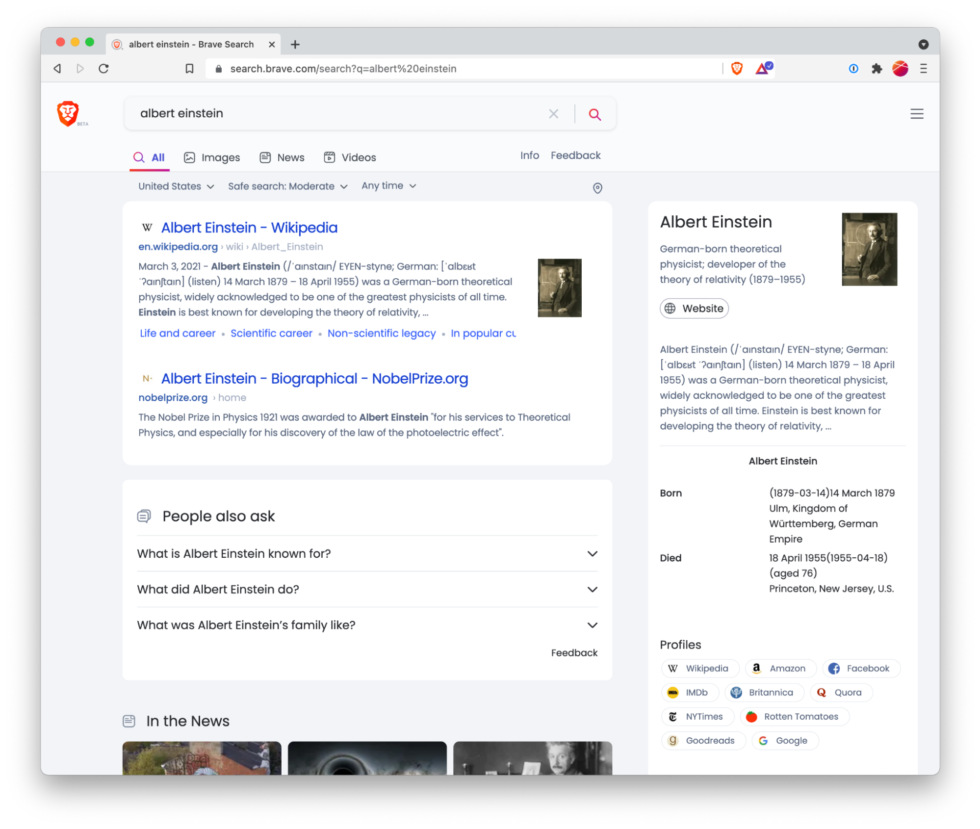
Existing browsers and search engines are challenged from a privacy point of view to track user behavior and collect information to display advertisements. Brave, a browser unveiled in 2019, emphasizes privacy and claims no user tracking, but on the other hand, so far, Brave has been based on traditional Google searches.
As the service provided by Google has a problem with how it handles user information, Brave acquired Tailcat, an open search engine, in March 2021 and put its efforts into developing its own search engine, Brave Search. come.
On October 19th, Brave announced that Brave Search would be enabled by default for users in the US, Canada, UK, France and Germany in the latest desktop browser version 1.31, Android app 1.31, and iOS app 1.32. Users in these five countries can use Brave Search. Of course, you can also switch to a different search engine from the settings screen.
Currently, BraveSearch doesn’t display ads, but the free version will soon start displaying modest ads. In the future, an ad-free premium version will also be offered.
Brave also announced the Web Discovery Project WDP. Users can opt-out to WDP to send anonymous data to Brave for browsing or accessing webpages opened in the Brave browser. It is a structure that transmits data so that users can view search terms, etc. Data collection is said to be done in a way that protects user privacy.
WDP, which collects user information, looks similar to other browser practices at first glance, but Breniv says about WDP, big tech search engines collect user information without notifying or asking the user. He said that most of the collected data is associated with an individual user by means of a record that can be linked with an identifier, he said. The explanation is that WDP will fundamentally change the way a search index is built to display search results that are highly relevant to users. Related information can be found here.

